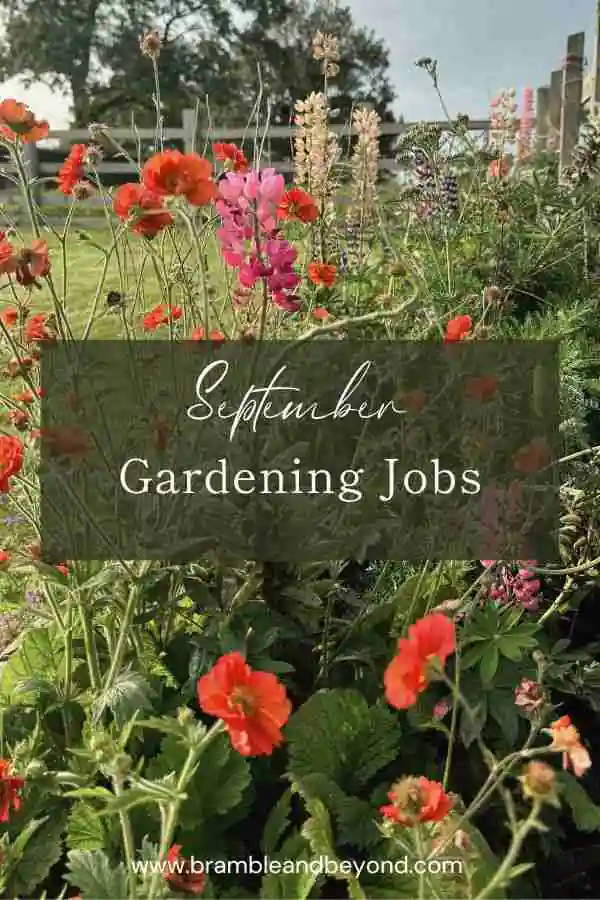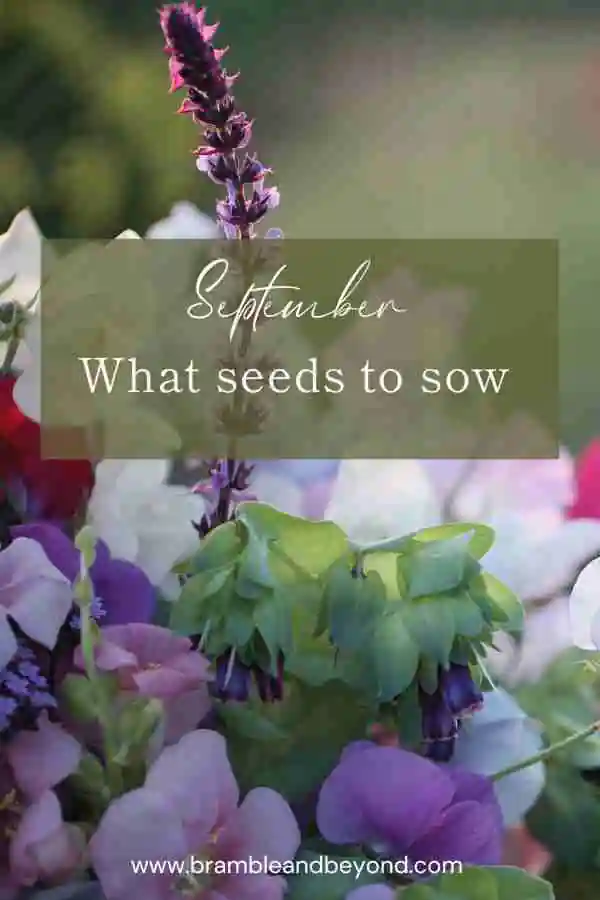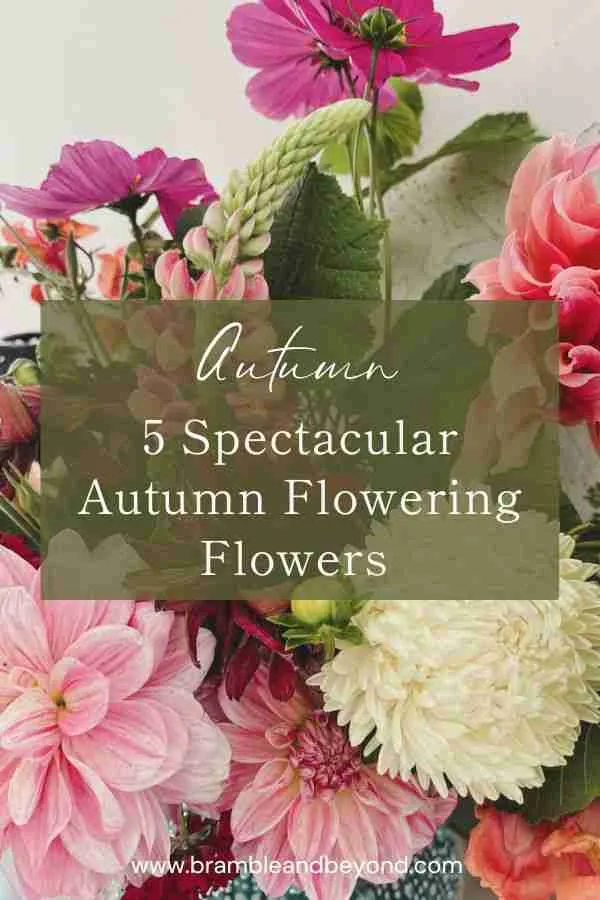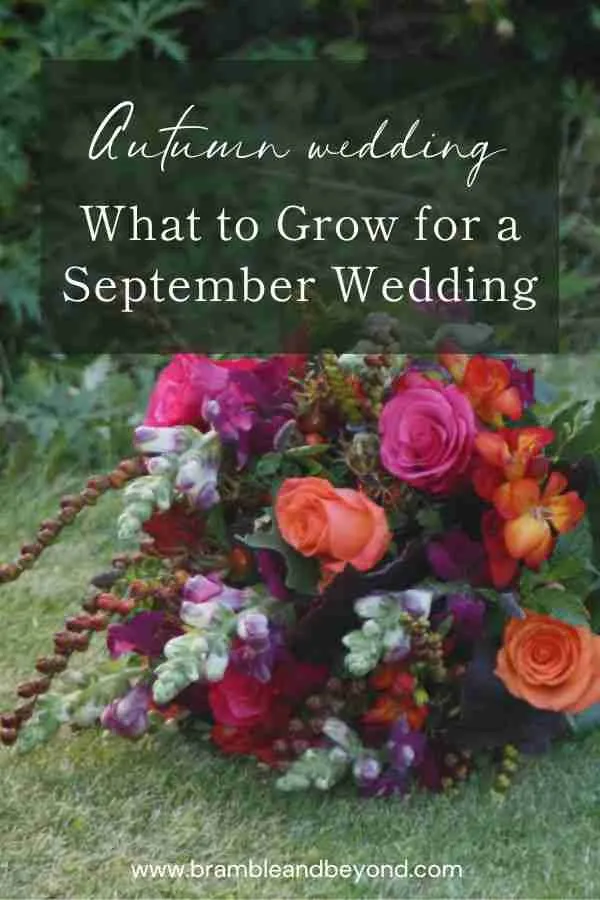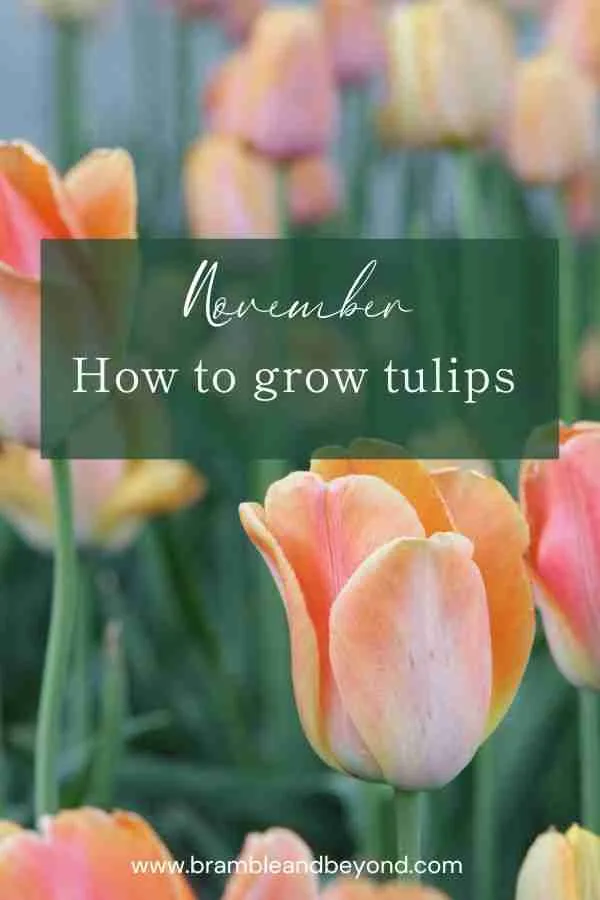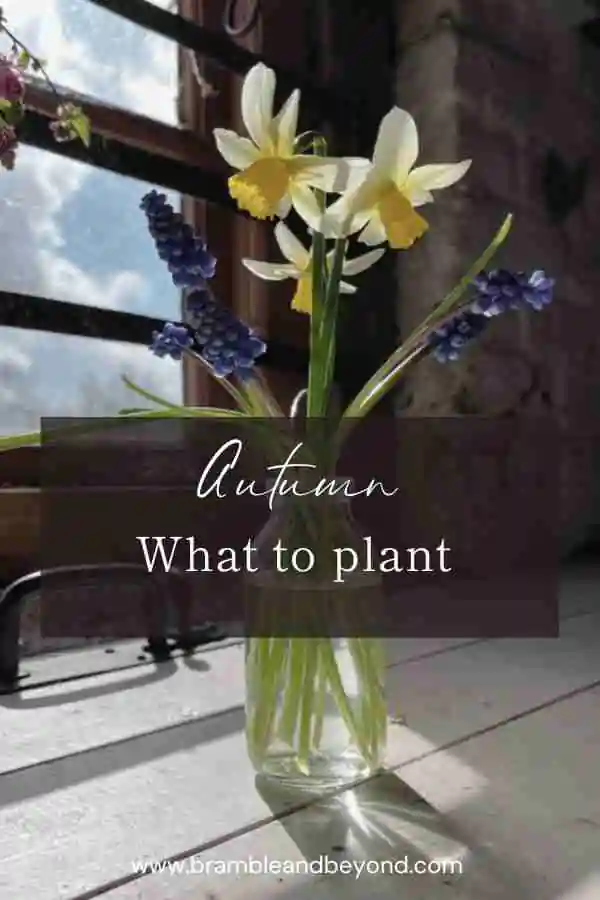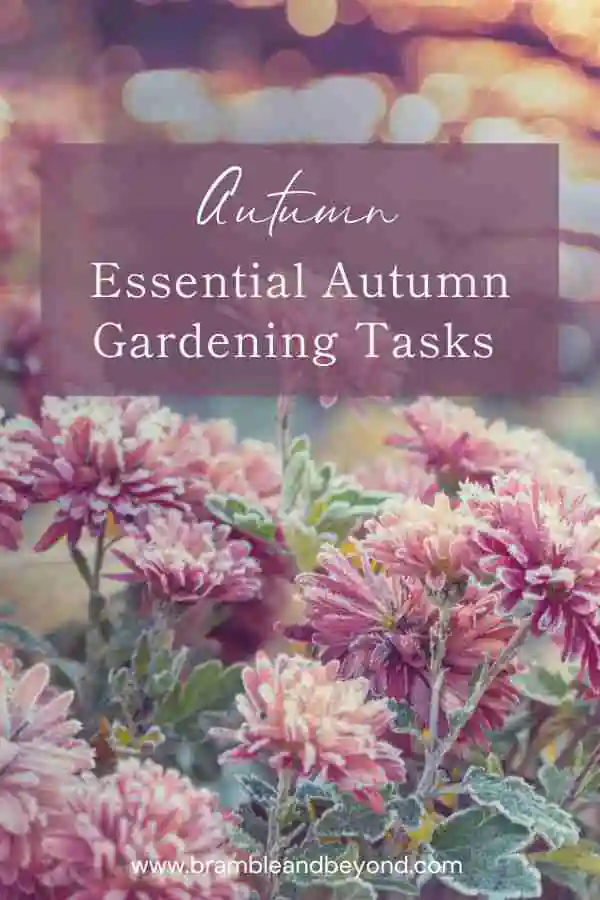Disclosure: This post may contain affiliate links, meaning I get commission if you decide to make a purchase through my links, at no cost to you. Please read my Affiliate Disclosure for more information.
With the arrival of September, the air is filled with the smell of damp earth and the promise of crisp autumn days. The change of seasons also means a change in the gardening tasks at hand. As a flower gardener, you probably know the joy of seeing your flower garden in full bloom. But how do you keep your garden thriving in September, whilst still preparing for the upcoming seasons?
September gardening jobs
Let’s delve into the essential September gardening jobs for this transitional month.
1. Sow hardy annuals & perennials
If you haven’t already made a start on sowing next spring’s seeds then, now is the perfect time to sow hardy annuals and perennials. These plants are robust enough to withstand the colder weather, and will reward you with beautiful blooms come spring.
Sowing them now means it is probably too late to plant them outside to overwinter, (you needed to start in August for that), but they can be kept in an unheated greenhouse. Just remember to check on them every now and again. They won’t need too much watering, as once they have finished their first burst of growing, as the weather cools, they will hibernate until the weather warms again.
If the weather gets particularly cold, maybe give them a little bit of protection. Covering them with a fleece or even some dry newspaper, will save them from getting too cold, but they can probably withstand more than you think.
2. Plant out biennials
Your early summer sown biennials, such as foxgloves and wallflowers, should be ready to be planted out in September. They’ll spend the winter establishing their roots, ready to burst into life in the spring.
Last autumn, I planted out all my biennials in the cutting patch through a weed membrane to help control the weeds. At some point during the winter, most of my biennials, and hardy annuals for that matter, have been munched by some critter. I had no such problem the previous year when the weed membrane was not present. Even the overspill biennials that found a home in the main garden beds (sans the weed membrane) weren’t munched on. The only survivors in the cutting garden have been sweet rocket and sweet william, although the latter look very raggedy.
Now, I could be jumping to conclusions, but I have to blame something! I have a sneaky suspicion that I’ve inadvertently set up a comfy home for slugs under the weed membrane. I think next year I will forgo the weed membrane and leave the soil open to the weather and see how it goes.
3. Seed collecting
If you want to create plants for free then collecting seeds is a rewarding task. Not only does it save money, but it also means you can continue to grow your favourite plants.
Most plants, especially annuals, are desperate to create seed. Leave a few flower heads for our bee friends to pollinate, and you’ll soon see the formation of seed heads. Each flower type has a unique seed head, but don’t worry, they’re not hard to spot. If you’re still not sure, just collect the entire old flower head.
Harvest the mature seeds into dry containers. I prefer using paper bags. Just label the bag, let the seeds air dry for a few weeks (no need to hurry), and voila! Once they’re all dried up, separate the chaff and move the seeds into airtight and watertight containers, like trusty old jam jars.
Beware of mice though! They find some seeds irresistible, I’ve learned this the hard way. To avoid an unintentional mouse feast, store your seeds in a mouse-free area until they’re sealed in a container.
I find storing my seeds in the fridge works best, thanks to a spare one in the barn. But don’t worry if you don’t have one, any cool and dry spot will do just fine.
If you want to buy the best seed for hardy annual cut flowers, I sell them in my seed shop.

4. Hang and dry late summer flowers
Don’t let those beautiful summer flowers go to waste! Hanging and drying them means you can enjoy their beauty all year round.
I’ve recently fallen head over heels for dried flowers. I adore the fact that I can play around with them during the colder months. Plus, anything I create lasts forever, unlike a fresh bouquet. Now, don’t get me wrong, fresh flowers are absolutely breathtaking, but you’d be amazed at how some flowers transform into something just as lovely when dried.
I’m still on a learning journey to discover the best flowers for drying. The usual ones like strawflowers and limonium (statice) are undoubtedly easy to dry, mainly because they already look dry when fresh. So, they don’t change much during the drying process. If you’re looking for vibrant colours, these are your best bet.
I haven’t had much success with roses yet, but dahlias have been a revelation. They are a bit precious, and some stems do lose their heads, but a little floral wire does the trick if you’re using them in wreaths. You can find the results of last season in my shop.
Now, I’m making it a habit to dry samples of every flower I grow just to see what works best.
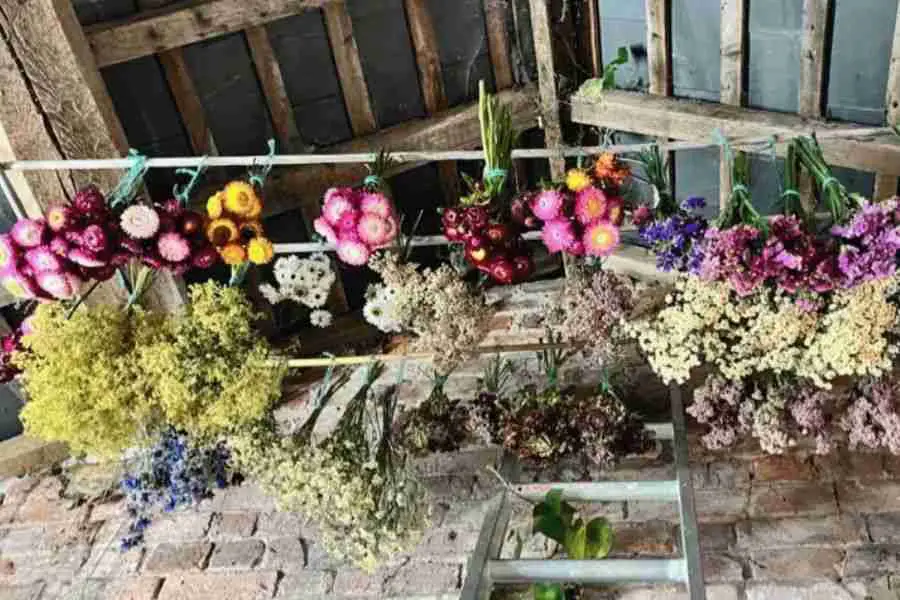
5. Planting narcissi & allium bulbs
To ensure a dazzling display of spring flowers, plant narcissi and allium bulbs in September, while the ground is still warm. They’ll lie dormant over winter, ready to bring a burst of colour to your garden in the spring.
I cover this in more detail in this post about what to plant in autumn.
6. Clear & mulch beds
Tidying up your garden is another important September task. This includes removing any dead plants or leaves, pruning back any overgrown plants.
Your annual plants will slowly be finishing their flowering period, so can be removed once they are finished. I like to just cut them off at the base of the stem, leaving their roots to naturally compost down into the soil. This way, we minimise disruption to the soil, keeping in line with the no-dig approach.
I then top dress the bed with about an inch of compost. This will help to protect the soil over the winter months, and provide a nutrient-rich environment for your plants in the spring.
You can, of course, mulch at any time, but during the autumn it gives the ground and the worms time to work together and incorporate the mulch into the soil without you having to lift a finger.
Gardening in September is all about preparation. As the famous novelist wrote ,
“Life starts all over again when it gets crisp in the fall.”
F. Scott Fitzgerald
So, let’s embrace the changing seasons and prepare our gardens for the beauty that lies ahead.
Remember, the September gardening jobs you complete now will ensure a vibrant and healthy garden in the seasons to come. So, roll up your sleeves and get stuck into your September gardening jobs. Your future self (and your garden) will thank you.

